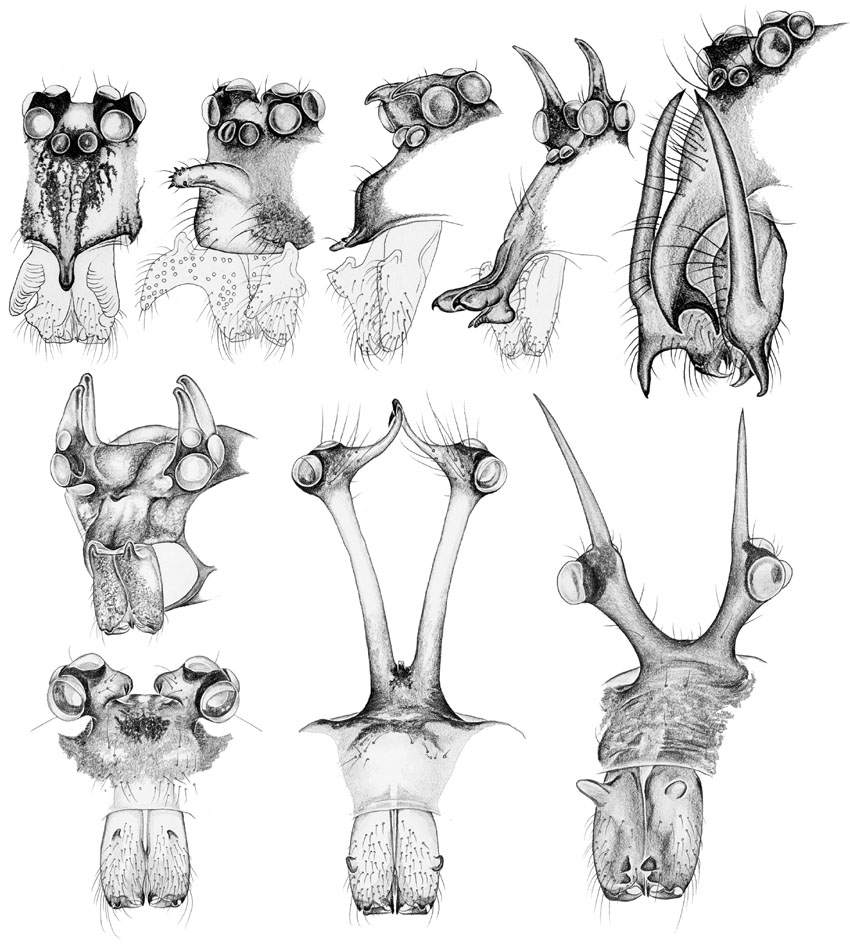Thus, it was no surprise when a recent study on sexual dimorphisms in arachnids (McLean et al. 2018, http://dx.doi.org/10.7717/peerj.5751) turned out to be heavily biased towards size dimorphism. This is what a Google search will tell you: sexual dimorphism in spiders is mainly about size. Taxonomists of course know that this is wrong, but the dimorphisms they describe are 'hidden' in species descriptions and taxonomic papers and not easily filtered by a search algorithm.
This motivated me to make a comprehensive list of sexual dimorphisms in Pholcidae. Some are quite spectacular, like the male 'head' modifications shown below, but this was no criterion. I tried to list all published dimorphisms, and to map them on the phylogeny of the family to get a rough estimate about how many times sexual dimorphisms have evolved in Pholcidae.
Sexual dimorphisms occur in almost any part of the body: the prosoma (ocular area, clypeus, sternum), abdomen, chelicerae, legs, sensory organs (setae, tarsal organs), and in coloration. Character mapping shows that sexual dimorphisms have originated more than 120 times independently. First conclusion: it's time to look beyond size. Second conclusion: dear fellow taxonomists, please revise dimorphisms in 'your' taxon!
